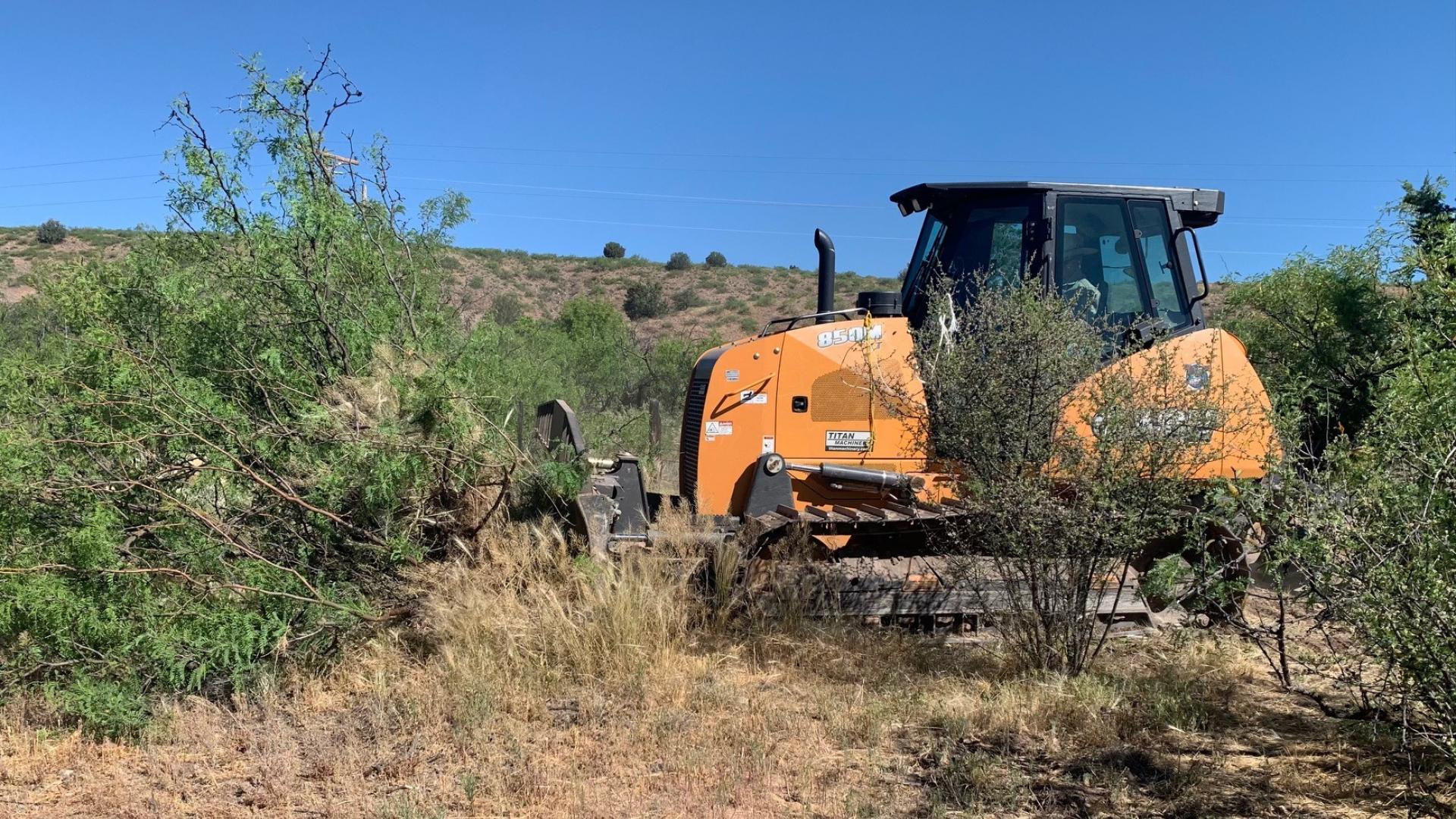
- Body
Written by Rachel Frost, Montana State University
Mechanical control on rangelands is defined as "the use of a tool to remove or destroy above and/or below ground plant material." There are numerous different ways to treat rangeland mechanically. The form of mechanical control that is best suited to a particular situation depends on:
- characteristics of the plants
- the size of the infestation (this is directly related to cost)
- availability of the equipment
- soil characteristics
- topography
- current and intended land use
Mechanical tools commonly employed to manage rangeland vegetation:
Chains. The use of chains to alter rangeland vegetation is called "chaining". Chaining involves pulling a large chain, most often a section of marine anchor chain, between 2 tractors. Vegetation is either pulled out of the ground by the roots or broken off at ground level. Chaining is most effective on trees as herbaceous material is generally not seriously damaged. Chaining provides relatively quick results and allows large areas to be treated at a relatively low cost, however, it causes substantial soil disturbance that can lead to compaction or erosion. Trees or shrubs that resprout may require additional treatment with herbicides or fire to actually kill the plants.
Root Plows. A root plow is a heavy-duty, V-shaped blade that is pulled behind a tractor to sever the roots of trees below the bud zone. Root plowing can control up to 90% of target plants when properly implemented; i.e. the blade is at the correct depth and it is done at the proper time of year. Unfortunately, root plowing also kills most herbaceous plants on site, especially when operating in areas of high tree density. Selective plowing can be used to sculpt the vegetation, improve wildlife habitat and enhance multiple use values on rangeland with fertile soils.
Mowers. Mowing is generally applied to herbaceous vegetation to immediately remove biomass from an area. It can be used to prevent seed production in patches of invasive weeds or to increase visibility and ease of travel such as along highways or in recreation areas. Mowing causes minimal soil disturbance, but does not necessarily kill the target plant and may cause harm to desirable vegetation as well. Repeated mowing may reduce resprouting trees and brush, however, it is most often combined with other treatments to achieve maximum control. Mowing is not suitable for rocky ground or areas with dense stands of large diameter trees.
Rakes. Rakes are often used after chaining or root plowing to smooth and prep the site for revegetation. Specially designed rakes allow trees and brush to be stacked with minimal soil in the pile.